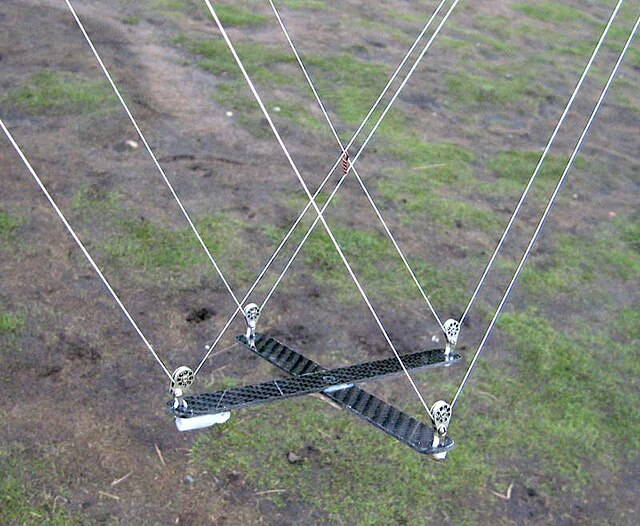Kite aerial photography (KAP) is a type of photography. A camera is lifted using a kite and is triggered either remotely or automatically to take aerial photographs. The camera rigs can range from the extremely simple, consisting of a trigger mechanism with a disposable camera, to complex apparatus using radio control and digital cameras. On some occasions it can be a good alternative to other forms of aerial photography.
Kite aerial photograph of Calton Hill, Edinburgh
Picavet cross
Kite photo of Bartlow Hills tumuli, Cambridgeshire, England
Henry Wellcome's photographic automatic kite trolley aerial camera device, used at Jebel Moya, Sudan, 1912–1913
A kite is a tethered heavier-than-air or lighter-than-air craft with wing surfaces that react against the air to create lift and drag forces. A kite consists of wings, tethers and anchors. Kites often have a bridle and tail to guide the face of the kite so the wind can lift it. Some kite designs do not need a bridle; box kites can have a single attachment point. A kite may have fixed or moving anchors that can balance the kite. The name is derived from the kite, the hovering bird of prey.
The Yokaichi Giant Kite Festival is held every July in Higashiomi, Shiga, Japan.
Various kites being flown
Star-shaped kite above a meadow south of Hockenheim. This sparless, ram-air inflated kite, has a complex bridle formed of many strings attached to the face of the wing.
Kite Flying by Suzuki Harunobu, 1766 (Metropolitan Museum of Art)








